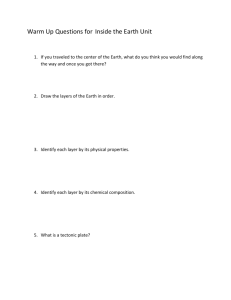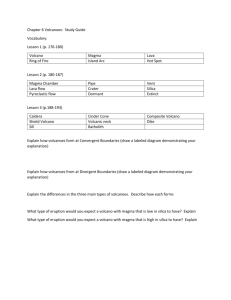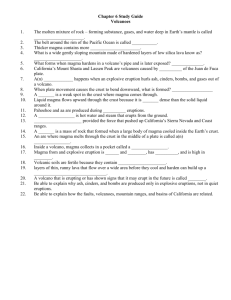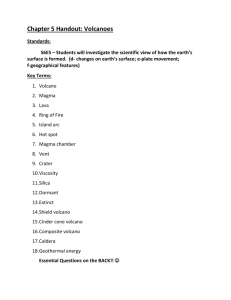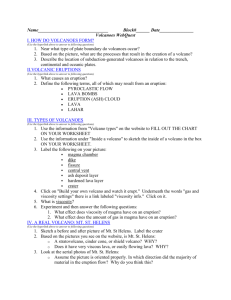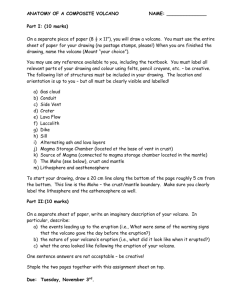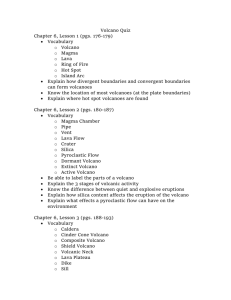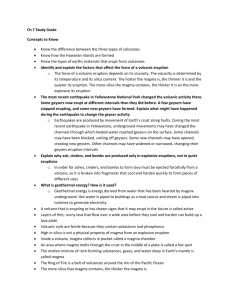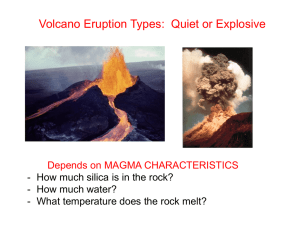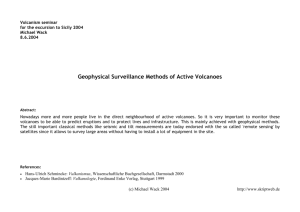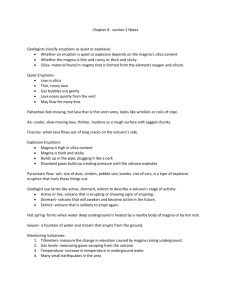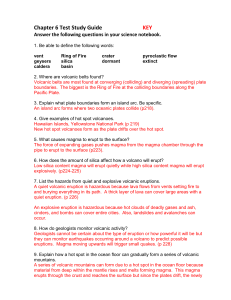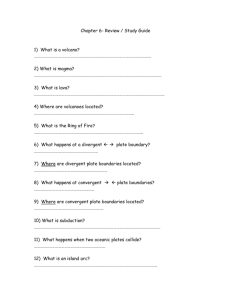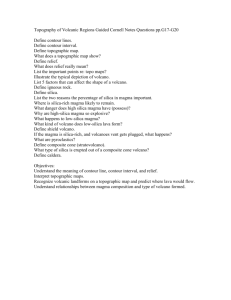Study Guide Chapter 6 Study Guide Volcanoes magma Ring of Fire
advertisement
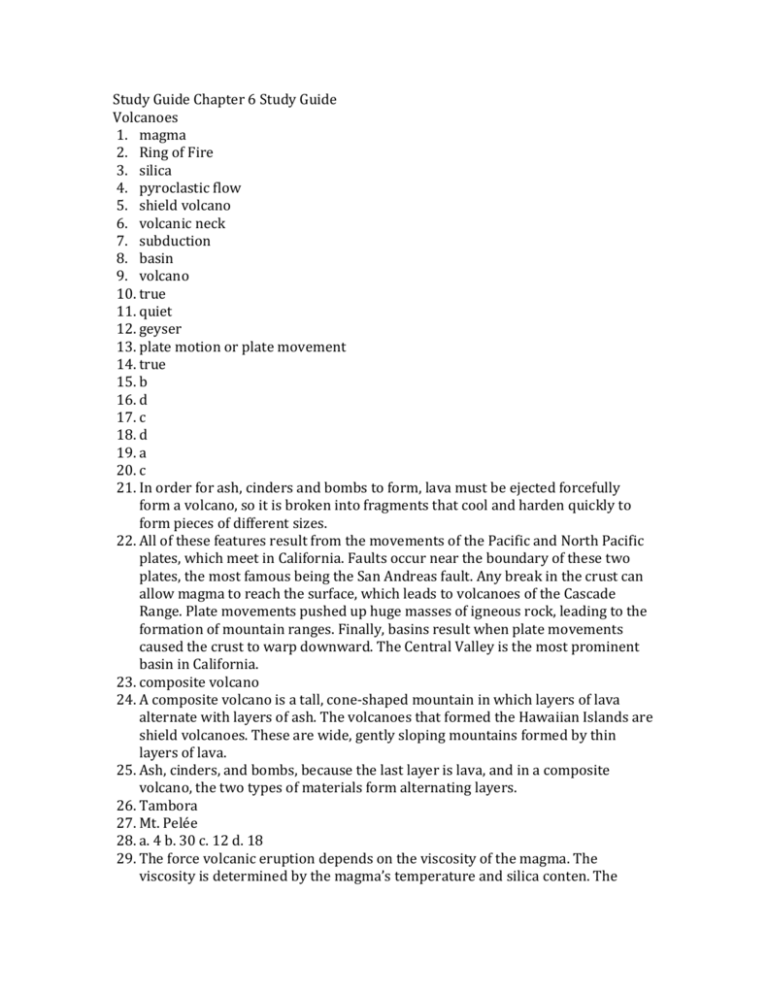
Study Guide Chapter 6 Study Guide Volcanoes 1. magma 2. Ring of Fire 3. silica 4. pyroclastic flow 5. shield volcano 6. volcanic neck 7. subduction 8. basin 9. volcano 10. true 11. quiet 12. geyser 13. plate motion or plate movement 14. true 15. b 16. d 17. c 18. d 19. a 20. c 21. In order for ash, cinders and bombs to form, lava must be ejected forcefully form a volcano, so it is broken into fragments that cool and harden quickly to form pieces of different sizes. 22. All of these features result from the movements of the Pacific and North Pacific plates, which meet in California. Faults occur near the boundary of these two plates, the most famous being the San Andreas fault. Any break in the crust can allow magma to reach the surface, which leads to volcanoes of the Cascade Range. Plate movements pushed up huge masses of igneous rock, leading to the formation of mountain ranges. Finally, basins result when plate movements caused the crust to warp downward. The Central Valley is the most prominent basin in California. 23. composite volcano 24. A composite volcano is a tall, cone-shaped mountain in which layers of lava alternate with layers of ash. The volcanoes that formed the Hawaiian Islands are shield volcanoes. These are wide, gently sloping mountains formed by thin layers of lava. 25. Ash, cinders, and bombs, because the last layer is lava, and in a composite volcano, the two types of materials form alternating layers. 26. Tambora 27. Mt. Pelée 28. a. 4 b. 30 c. 12 d. 18 29. The force volcanic eruption depends on the viscosity of the magma. The viscosity is determined by the magma’s temperature and silica conten. The hotter the magma is, the thinner it is and the quieter its eruption. The more silica the magma contains, the thicker it is and the more explosive it eruption. 30. Accept all reasonable explanations. Sample Answers: Movement of Earth’s crust along faults produces Earthquakes. During the most recent earthquake in Yellowstone, underground movements may have changed the channels (racks in the rock) through which heated water reached geysers on the surface. Some cannels may have been blocked, cutting off geysers. Some new channels may have opened, creating new geysers. Other channels may have widened or narrowed, changing their geysers’ eruption interval.
